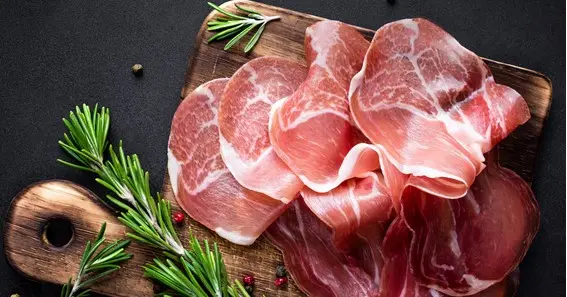So, what is Capicola? Curing the neck of the pig creates capicola. Hence making the meat moist and soft. The curing process takes ten days, followed by coating it with fennel seed, coriander, black pepper, and anise and then roasting it to produce a ham-like dish. Let us understand more about what is capicola.
What is Capicola?
Capicola is a conventional Italian and French red meat made from the dry-cured muscle strolling from the neck to the fourth rib of the pork neck. We season capicola with all kinds of salt and spices and then cure and age it. After the curing, we thinly slice the capicola, making it a popular addition to sandwiches and pizza. Its flavor profile is rich, with subtle spice notes and, occasionally, a hint of sweetness, which varies based totally on the unique recipe and also what is capicola.
The capicola gives itself a cylindrical shape, showcasing a blend of colors, red intertwined with streaks of white. Its floor might undergo a diffused trace of the herbs and spices used during curing. The texture is firm and yielding, perfect for thin reduction, whether for a sandwich or as a part of a charcuterie arrangement.
Taste of capicola
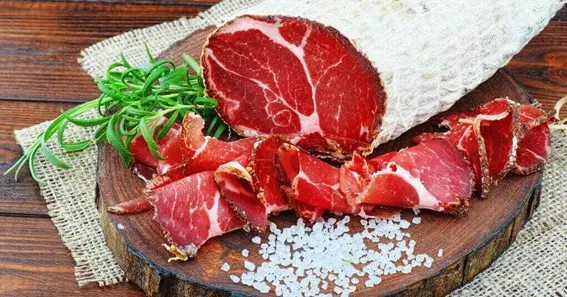
Capicola’s flavor conjures a harmonious combination of savory and sensitive sweetness, accented by a whisper of spice. Its flavor profile is rich and nuanced, with subtle recommendations of garlic, pepper, and different seasonings, depending on the curing technique. We achieve succulence by marbling the meat, making it a delicious experience.
Technique to cook capicola
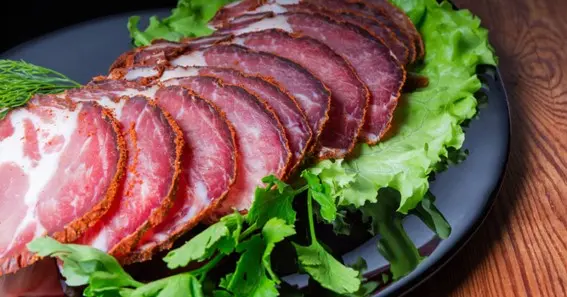
We can quickly and cost-effectively make capicola at home using simple techniques. Here are a few basic steps you need to follow to cook dinner for a super capicola and what is capicola.
Basic Ingredients:
First, we need a regular red meat loin, purple curing salt, and size 24 meat netting. We use pink curing salt to preserve the beef’s appetizing pink color and the net to maintain its shape while cooking, resulting in stunning slices.
Blending
Place the sea salt, sugar, crimson pepper flakes, and crimson curing salt in an espresso/spice grinder, or use a mortar and pestle to grind them. The red salt must be frivolously allotted within the rub.
Curing the pork
Place the pork in a big bowl or on a piece surface and massage the rub into the beef. Wrap the meat tightly in plastic wrap and refrigerate it for five days. We turn it over after five days, so the lowest aspect is to up and refrigerate it. We unwrap the capicola after ten days. The Capicola will be a formidable corporation. We thoroughly rinse it beneath bloodless water to remove the spices and set it aside.
Preparation to make the rub
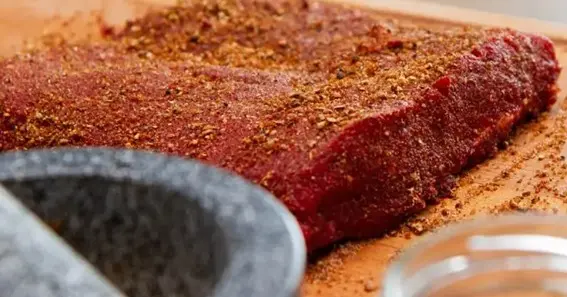
We make the rub, place the fennel seeds, coriander seeds, anise seeds, red pepper flakes, and black peppercorns in a spice grinder, or use a mortar and pestle to grind the spices till we get a rough rub. We lightly blot the capicola with a paper towel. Spread the rub onto a plate or painting surface and roll the capicola, coating all facets.
Netting roll
Next, we want a 24-netting roll. Now we Cut a chunk of netting off the roll that is a few inches. We stretch the netting and feed the capicola via it.
Roasting
We preheat the oven to 250 degrees F. We then fill a pan with water and place it on the middle rack of the oven. Cook the capicola for 1 hour, flip it over so the bottom aspect is up, and bake it for another hour or until the inner temperature reaches 145 degrees Celsius.
Refrigeration
After roasting, we bring out the capicola, and without removing its cover, we refrigerate it for the next 4 hours.
Serve and Enjoy
Your made Italian capicola is ready to eat. Slice it thinly, enjoy it in your sandwiches or pizzas, or eat it alone.
Nutrients found in capicola
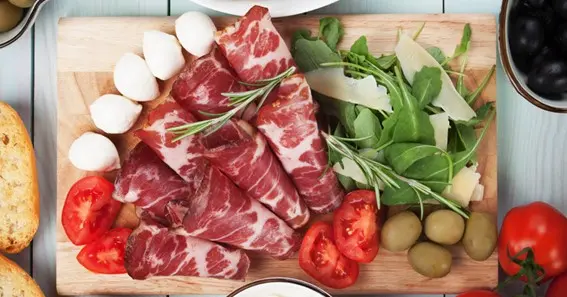
Capicola contains several vitamins, protein for muscle health, and nutrients like B12, zinc, and selenium. However, it’s wise to eat it moderately because of its excessive saturated fat and sodium range. Pairing capicola with veggies and whole grains can assist in balancing its dietary effect within various food regimens.
The” gabagool ” period is an informal way of pronouncing “capicola” in Italian-American circles. It’s derived from the pronunciation of “capicola” in specific local Italian dialects, mainly from southern Italy. This linguistic variant has become popularized in communities, specifically in regions like New York and New Jersey, as a playful and acquainted term for cured meat.
Conclusion
Capicola is a conventional Italian treat at its first rate while thinly sliced and served without cooking. Its tricky flavor profile, blending savory and sweet factors, lends itself well to several culinary creations, from simple antipasto spreads to sandwiches and salads. While it can be integrated into cooked dishes, it is vital to address it delicately to preserve its unique traits. It is very simple to know What is Capicola.
FAQ
How is capicola one-of-a-kind from different cured meats?
Capicola is incredible from exceptional cured meats like prosciutto and salami in terms of its taste and texture. It has a rich, barely spicy taste and a gentle, marbled texture that units it aside from different cured meats.
Is capicola spicy?
Capicola could have a barely highly spiced flavor due to adding black pepper and occasionally other spices like pink pepper flakes.
How does the capicola need to be stored?
Capicola must be stored inside the refrigerator, wrapped in butcher paper or an airtight box. It’s pleasant to consume it inside some days after opening it.
How is Capicola customarily served?
After curing, the capiola slices can be used in pizza or sandwiches to enhance the dish’s taste.
Can capicola be used in cooking?
Capicola can be used to add depth of flavor to recipes. It can be used in sauces for pasta, soup, omelet, or topping.
Is Capicola Healthy?
Capicola is excessive in sodium and fat, as with any cured meat, so it has to be eaten up moderately as part of a balanced food regimen.
Sources:
https://recipes.net/articles/what-is-capicola-2/#google_vignette
https://www.thedailymeal.com/1362749/what-is-capicola-and-what-does-it-taste-like
